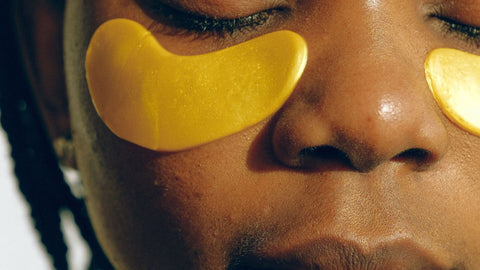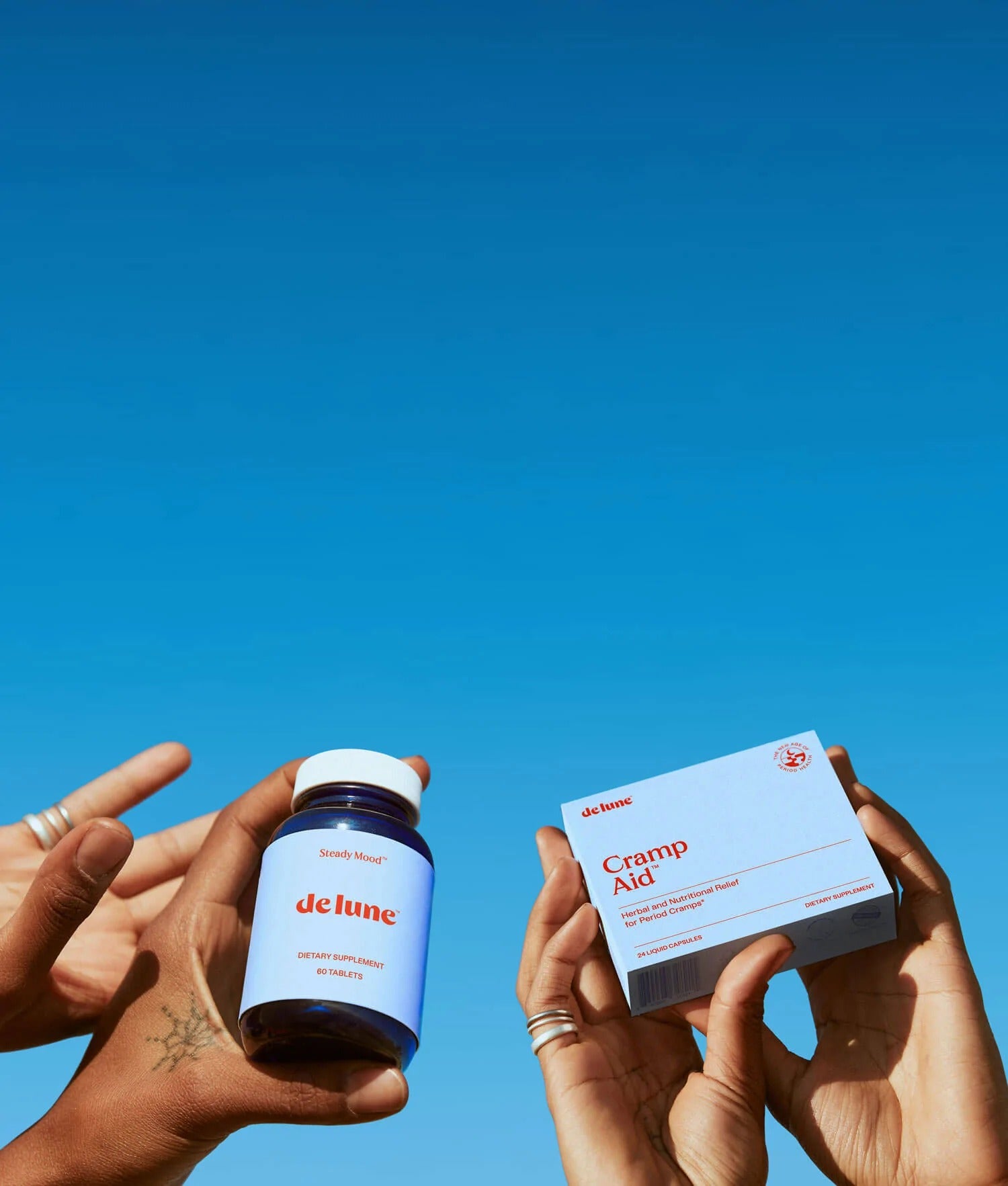Coming off of birth control pills can be challenging, and in a perfect world, this would be clearly communicated before prescribing people the pill in the first place. But that’s usually not how it goes.
Birth control pills are often presented as a silver bullet approach to easier, more regular periods and reliable contraception. For most people, the choice to start the pill is a no-brainer. But for many, it doesn’t work out.
Nearly 60% of people prescribed the pill stop taking it within the first 6 months. 34% of people who stop the pill do so because of side effects (1).
Side effects from the pill are most common during the first 3-5 months of use (2). While most people know that adjusting to a new medication is a process, fewer realize that readjusting after discontinuing a medication is just as much—if not more—of a process, especially when it comes to stopping the pill.
This article covers what you need to know before coming off hormonal birth control. It explains:
- What to expect after coming off the pill
- Why post-pill symptoms happen
- Tips for preventing post-pill symptoms
- What your period might be like after coming off the pill
What to expect after you coming off of birth control pills
IN THE LONG TERM
Most people feel better in the long run after coming off the pill, especially if they stopped due to side effects.
Coming off the pill will eventually reveal the benefits of your natural cycle. The “period” you got while on the pill wasn’t technically a period, but rather a withdrawal bleed from the pill’s synthetic hormones. In fact, the pill switched your “real” menstrual cycle off entirely. Instead of natural fluxes in hormone levels throughout the month, the pill gave you drug versions of those hormones in consistent amounts.

But once you begin cycling naturally again, you can enjoy benefits like:
Ovulation energy
Cycling bodies experience a mid-cycle spike in reproductive hormones, and can feel bolder, braver, and more confident around days 14-20 of their cycle as a result.
Natural progesterone
The pill’s progestins—the synthetic version of the natural hormone progesterone—don’t have the same benefits as the real thing. Natural progesterone helps reduce inflammation, relieve anxiety, preserve the skin, boost libido, and protects the brain (3, 4, 5, 6, 7)
A fifth vital sign
The menstrual cycle is sometimes called the “fifth vital sign” because it reflects a person’s underlying health status (8). Painful or difficult periods are your body’s way of telling you something isn’t right. It can be the first (and sometimes, the only) obvious indication that your system is off, making it a powerful window into your health.
IN THE SHORT TERM
The short-term is usually the most challenging time to be off hormonal birth control. Post-pill symptoms are possible, and can include:
Post-pill symptoms aren’t fun. But if you’re considering going off the pill because it’s causing side effects, it’s worth asking yourself how these possible post-pill side effects compare to the ones you’re experiencing from the pill itself.
Side effects of stopping birth control pills
ACNE
Hormonal birth control is highly effective at reducing breakouts. It clears acne by down-regulating the amount of oil—or sebum—the skin produces. (9)
In response, your body up-regulates oil production in the background, though you likely don’t notice because the extra oil is being masked by the oil-reducing effects of the pill.
Once you stop the pill, however, your body will continue to up-regulate oil production. Without the pill’s oil-reducing effects to serve as a counterbalance, the extra oil can clog pores and cause acne.
Post-pill acne is usually at its worst around six months after stopping the pill, then subsides. But timing varies depending on how acne-prone your skin is.
IRREGULAR OR MISSING PERIODS
Amenorrhea (lack of menstruation), irregular cycles, or a temporary form of post-pill PCOS can happen after coming off hormonal birth control. Also known as “post-pill syndrome”, all three issues stem from the same root cause: lack of ovulation.
Ovulation is when your ovary releases an egg, and it’s finicky. It won’t happen unless you’re making the right reproductive hormones in the right quantities at the right time.
Hormonal birth control prevents pregnancy by suppressing the hormones that make ovulation happen. Because you weren’t making your own reproductive hormones while you were on the pill, you may have fallen out of practice.
Some people are able to ovulate right away after coming off the pill. For others, it can take months (sometimes years) before they ovulate consistently again. Ovulation determines the timing of your period, so expect periods to be irregular until you do.
WORSENED PMS
Estrogen and progesterone—the two main hormones that drive natural menstrual cycles—have stimulating effects on the brain. Because levels of these hormones plummet just as PMS sets in, some researchers think that PMS mood symptoms are a sort of hormonal withdrawal (10). The brain responds to these hormones when they’re around, and is sensitive when they’re not.
The synthetic estrogen in the pill is thought to be ~4x stronger than your body’s natural estrogen. Your brain adjusted to the high-potency estrogen while you were on the pill, and it will miss it when you stop, resulting in worsened emotional and cognitive PMS symptoms.
Ovulating consistently helps relieve PMS, so expect PMS symptoms to improve once your body’s relearned how to make enough of its own estrogen and progesterone.
Tips for coming off the pill: how to prevent symptoms
Prepare, prepare, prepare. There are no quick fixes in hormonal health, so you may be stuck with post-pill issues for a few months if you wait until they’re full-blown issues to address them.
WHEN TO PREPARE
If you’re concerned about post-pill symptoms, we recommend you start prepping your body to come off hormonal birth control 1-3 months before you take your last dose of the pill.
If you’re only concerned about post-pill acne, one month of prep may be sufficient. If you’re concerned about worsened PMS or irregular or missing periods, three months of prep may be needed. Click here to learn why optimizing hormones for PMS relief is a 90-day process.
HOW TO PREPARE
Eat enough
Undernourishment is a common cause of lack of ovulation, which is at the root of post-pill issues like worsened PMS, irregular periods, lack of periods, and post-pill PCOS.
Supplement with zinc
Zinc has been clinically shown to be effective for acne in general (11). It can be helpful for post-pill acne specifically because it nourishes the ovaries and supports healthy ovulation, which in turn supports the production of hormones that improve skin health. Zinc also helps suppress the hormonal pathways that cause the overproduction of skin oil post-pill. Low zinc levels are common after stopping the pill, so it’s important to replenish.
Supplement with magnesium and vitamin B6
Especially if you’re concerned about worsened PMS post-pill. Hormonal birth control has been shown to deplete both of these nutrients (12), and low levels of each have been implicated as a common root cause of PMS.
Manage stress
Easier said than done. But unmitigated physical or emotional stress can signal to your brain that it’s a bad time for pregnancy, which will shut down ovulation. In addition to lifestyle approaches like getting plenty of sleep, exercising, curbing screen time, or meditation, you can also consider adaptogens—herbs that help the body cope with stress. Rhodiola is our top adaptogen pick for relieving PMS-related stress, fatigue, and brain fog.
Find science-based amounts of zinc, magnesium, vitamin B6, and rhodiola in Steady Mood—our daily multivitamin to help address the root causes of PMS. Because it promotes hormonal resilience and supports healthy ovulation, it’s also a great choice to help prep your body for coming off the pill.
What might my period be like after coming off of birth control pills?
What were your periods like before you went on the pill? That’s your answer.
Remember, the monthly pill bleeds you got while on hormonal birth control were not “real” periods. Your post-pill periods will be like your pre-pill periods: your natural, unsuppressed cycle.
If you don’t remember what your pre-pill periods were like, or you went on the pill shortly after getting your period for the first time, prepare for the possibility that your post-pill periods will be quite different from the "pseudoperiods" you got while on the pill.
If your pre-pill periods were painful, irregular, heavy, or arrived with PMS symptoms, prepare for the possibility that those issues return. Unless you've taken other steps to improve your menstrual health, whatever was causing those problems before you went on the pill probably hasn't gone away, it's just been masked by the pill's effects.
Getting reacquainted with your unsuppressed period can feel scary, especially if cycle-related issues were why you went on the pill to begin with. Don’t panic. We've created menstrual health solutions to help welcome you back to your natural cycle. If any cycle-related issues re-emerge post-pill, you know who to call.
This information is for education purposes only. It is not a substitute for professional medical advice, and is not intended to diagnose, treat, cure, or prevent any condition.
References
1. Westhoff, C. L., Heartwell, S., Edwards, S., Zieman, M., Stuart, G., Cwiak, C., ... & Kalmuss, D. (2007). Oral contraceptive discontinuation: do side effects matter?. American journal of obstetrics and gynecology, 196(4), 412-e1.
2. Barr, N. G. (2010). Managing adverse effects of hormonal contraceptives. American Family Physician, 82(12), 1499-1506.
3. Niven, D., Rae, M., Critchley, H., & Hillier, S. (2004, March). An anti-inflammatory role for progesterone at the human ovarian surface?. In Endocrine Abstracts (Vol. 7). Bioscientifica.
4. Bitran, D., Shiekh, M., & McLeod, M. (1995). Anxiolytic effect of progesterone is mediated by the neurosteroid allopregnanolone at brain GABAA receptors. Journal of neuroendocrinology, 7(3), 171-177.
5. Holzer, G., Riegler, E., Hönigsmann, H., & Schmidt, J. (2005). Effects and side effects of 2%‐progesterone cream on the skin of peri‐and postmenopausal women: Results from a double blind, vehicle‐controlled, randomized study. Experimental Dermatology, 14(2), 156-157.
6. https://books.google.com/books?id=D1fOTC6CP3kC&pg=PA44#v=onepage&q&f=false
7. Schumacher, M., Guennoun, R., Stein, D. G., & De Nicola, A. F. (2007). Progesterone: therapeutic opportunities for neuroprotection and myelin repair. Pharmacology & therapeutics, 116(1), 77-106.
8. American Academy of Pediatrics, & American College of Obstetricians and Gynecologists. (2006). Menstruation in girls and adolescents: using the menstrual cycle as a vital sign. Pediatrics, 118(5), 2245-2250.
9. Arora, M. K., Yadav, A., & Saini, V. (2011). Role of hormones in acne vulgaris. Clinical biochemistry, 44(13), 1035-1040.
10. https://www.aafp.org/afp/2003/0415/p1743.html
11. Cervantes, J., Eber, A. E., Perper, M., Nascimento, V. M., Nouri, K., & Keri, J. E. (2018). The role of zinc in the treatment of acne: A review of the literature. Dermatologic therapy, 31(1), e12576.
12. Palmery, M., Saraceno, A., Vaiarelli, A., & Carlomagno, G. (2013). Oral contraceptives and changes in nutritional requirements. Eur Rev Med Pharmacol Sci, 17(13), 1804-13.








